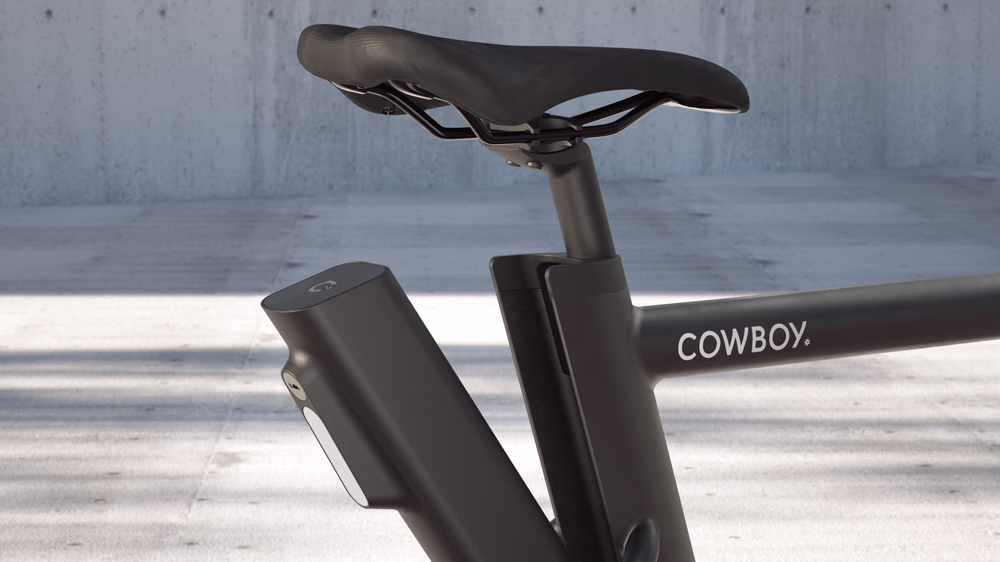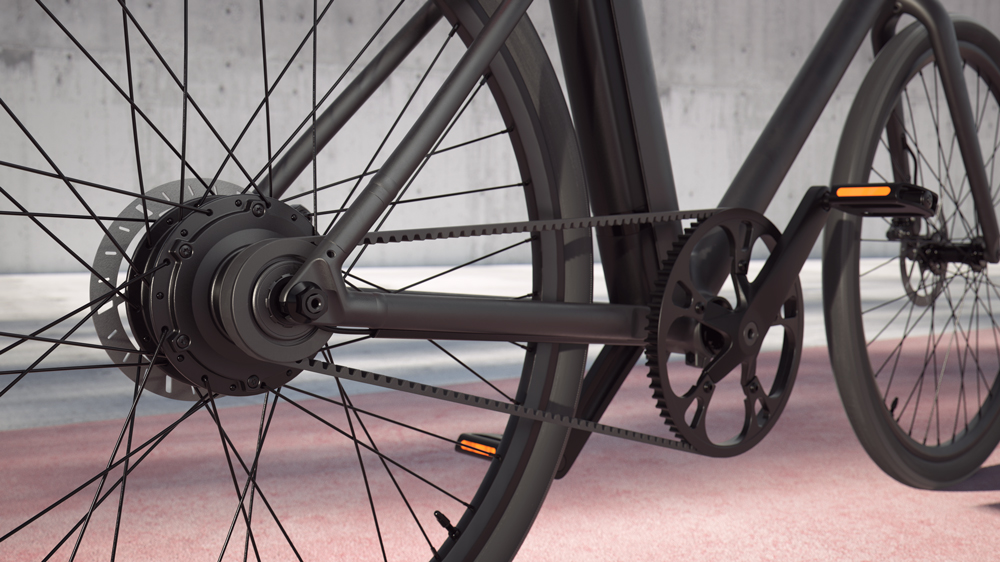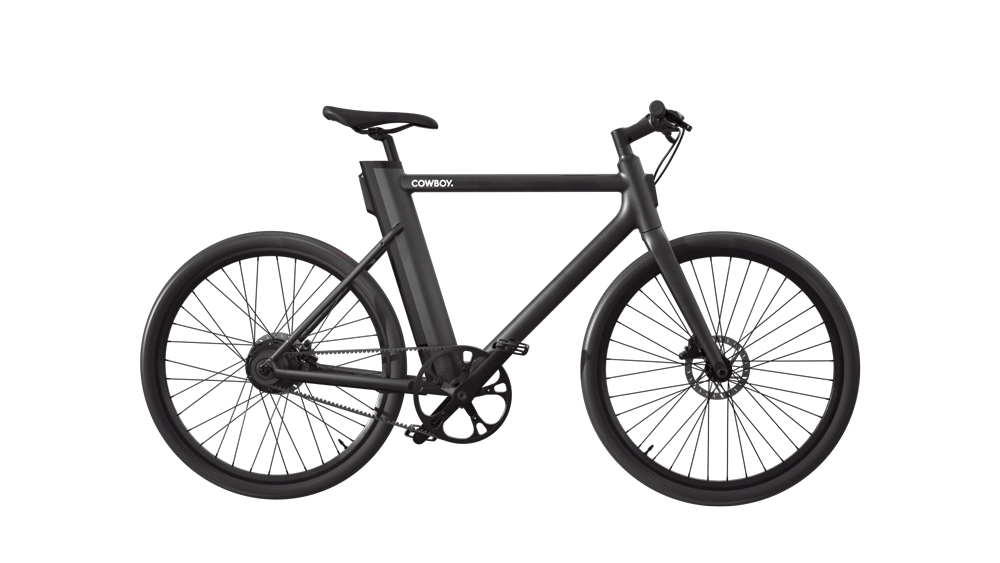You can trust Coach
Electric bikes have many excellent uses, like making it easier for mountain bikers to get up hills so you can enjoy more downs every outing, or making it a breeze to commute by bike every day so you’re not totally knackered by Wednesday evening.
One common problem if you ride them to work is the risk of theft. You can more easily arrange a decent degree of security at home, but you have to lock it somewhere while at work and since getting around is so little effort it’s also tempting to make diversions to run errands on the way to and from work. E-bikes are valuable – this mid-range model is £1,780 – and all bikes are unnervingly simple to steal, with even the best bike locks only able to slow down committed thieves.
So even though I’ve ridden and enjoyed riding many e-bikes, especially up the hill on the final leg of my commute, the fact that I can’t confidently lock one up in my back garden or at a shop on the way home means I’ve never considered forking out for one myself. Until, that is, I got my hands on the Cowboy.
I get the impression the Belgian start-up has benefited from not being a traditional bike manufacturer: instead, it’s taken a step back and considered how someone would design a bike for 21st-century urban riding if starting from scratch.
Among the clever features Cowboy has included to answer that question is sticking a SIM card in the bike. This means that the electric assistance can only be turned on by the app on a paired smartphone and that the bike can be located by GPS. These are both compelling security features, especially since it’s not an enjoyable ride at all without the assistance.
Of course, just because you’ve located a stolen bike doesn’t mean you’d want to start banging on strangers’ doors, and it remains to be seen whether the police would attempt to use these functions. The most practical application is that it allows Cowboy to provide cheaper bike insurance that offers a like-for-like replacement. Or it will, at least – that insurance isn’t available in the UK yet.
This modern approach extends to the app, which unlocks the bike and turns on the integrated lights (the rear light also acts as an automatic brake light). Yes, if your phone has run out of battery you cannot turn your bike on, but if your phone runs out of battery when the bike is already on then the bike will stay on – either until it runs out of battery or until you recharge your phone and turn it off. You can also set up automatic shut-off after a predetermined period of inactivity.
The most impressive part of my experience involved the chat section in the app, where you can get support. I had a problem with the lights turning on and when I told customer service (admittedly I did mention I was a journalist reviewing the bike), I received a series of prompt responses and the software on my bike was reset remotely. The lights turned on and have worked since.
The other part of the non-riding experience which set Cowboy apart was decidedly old-fashioned – a set of exceptionally clear instructions for setting the bike up, printed on paper. No referring to a series of online videos. No assumption you’ve brought a direct-to-consumer bike before and know how to turn the handlebars round and screw in pedals. Just easy-to-understand instructions with pictures and words, and all the tools I needed to complete the set-up included. It feels like an odd thing to praise, but it got me on the bike far more quickly and confidently than with any other e-bike I’ve had to unpack.

The 2.4kg battery clips on to the back of the seat post and while the instructions discuss how this weight placement may affect how the ride feels I found it natural, perhaps because it made the motor in the back wheel feel solid and weighted. It can be removed with a key and charged separately from the bike. The range of 70km is on the low side, but this is an urban commuter bike so if you’re doing more than 35km each way then a hybrid or touring e-bike is a better choice for you. It takes 3½ hours to charge up with no quick charge feature, so it’s wise to plug it in at work or overnight regularly.
Of course, all this innovation is meaningless if it rides like a pig, but the Cowboy provides an easy ride, injecting assistance earlier than other models to compensate for the lack of gears and rubber chain.
The rubber chain had my office mates at our sister title Cyclist purring, and pointing out that although it’s not as efficient as a new metal chain, the latter will wear before long and the rubber chain will outperform it. Once you hit the cut-off point for the motor the Cowboy can feel a little sluggish and it takes extra effort to go any faster, but 15.5mph (25km/h) is a decent cruising speed and plenty for relaxed urban riding.

It’s worth noting that the wide tyres have no tread on them, although I am reliably informed by a colleague on Cyclist that on commuter and road bikes, tread is just for show. Unless you’re riding on mud, a flat surface provides better grip and energy transfer. Even in the wet I had no issues with cornering or slipping, and the powerful disc brakes brought me to a stop quickly. I did experience a puncture, however, which might have something to do with my negligence of checking and inflating the tyres every week as I do on my regular ride, combined with the extra weight of the battery on the back tyre, or it may be that the Cowboy lacks thick, puncture-resistant tyres.
When I did experience the puncture, I could easily lift the back up by the saddle and wheel it along just using the front. This is because the Cowboy weighs 16.1 kg, putting it very much on the lighter end of the weight scale for e-bikes, most of which are over 20kg.
To go with the single-speed design, the handlebars are narrower than on hybrid e-bikes, which took some getting used to. The steering is a little twitchier and I found myself in a more hunched, tight-shouldered position. Also the Cowboy’s mudguards cost an additional £77, which is very expensive for mudguards.
But those are the very few gripes I have with Cowboy (OK, the name too). And they’re forgivable, because the only other company I’ve seen offer this killer bike-SIM combo is VanMoof, whose Electrified S2 model retails at £3,200, almost double the Cowboy’s price (although it also offers an innovative subscription service, £98 plus £24 a month).
Hats off to Cowboy. This is the e-bike I would buy myself.
Buy from Cowboy | £1,790
More About E-Bikes
- Ride to work in style with our top pick of the best e-bikes for commuting
- Experts guide you on differences between models and styles in our electric bike buyers' guide
- Here's how to save cash on an e-bike using the cycle to work scheme

Jonathan Shannon was the editor of the Coach website from 2016 to 2024, developing a wide-ranging experience of health and fitness. Jonathan took up running while editing Coach and used the training plans on the site to run a sub-40min 10K, 1hr 28min half marathon and 3hr 6min marathon. He’s an advocate of cycling to work and is Coach’s e-bike reviewer, and not just because he lives up a bit of a hill. He also reviews fitness trackers and other workout gear.


